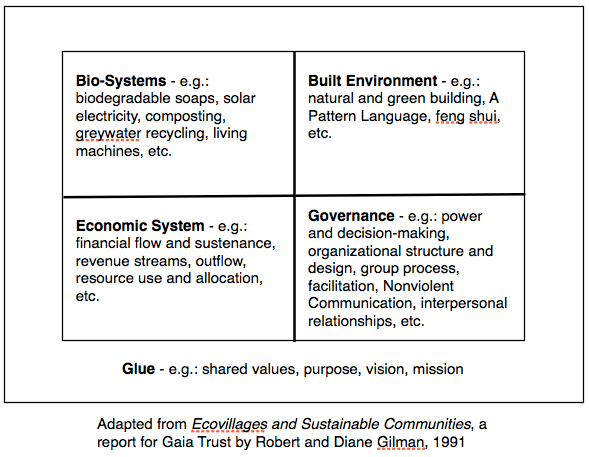Year after year, decade after decade, the idea of living cooperatively with others in some form of intentional community has garnered increasing interest. Whether it’s a co-housing community or a full-blown ecovillage, people want to live more lightly on the Earth, share resources, and have a deeper, richer sense of community in their lives.
Whatever your land-based or community-centered project, you would do well to avoid some basic pitfalls and include some essential-yet-often-overlooked elements.
See this image:
Most community projects focus on the top two boxes, the bio-systems and the built environment, and tend to procrastinate on – or never address – the bottom two.
But the top two are the easiest to figure out and address, especially since the solutions related to them are widely available, information-intensive and mainly technical.
The bottom two are the hardest to implement effectively and require interpersonal skill development. Failure to address these well is a primary reason community projects fail.
And then there’s the glue – called that because it holds everything together. When a group has lack of alignment at this level, in the long term it breeds difficulty, struggle, and sometimes conflict.
So if you’re working on a project with other people, focus on the glue first; the purpose, vision, mission, and shared values. Then figure out how you are going to do governance and decision-making, and how the group will be physically/financially sustained in it’s efforts. This will provide a strong foundation for the rest of the work.
The top two boxes – which is where 99% of Permaculture, ecological design, and people’s conventional understanding of “sustainable living” lies – is actually much more straightforward to implement.
